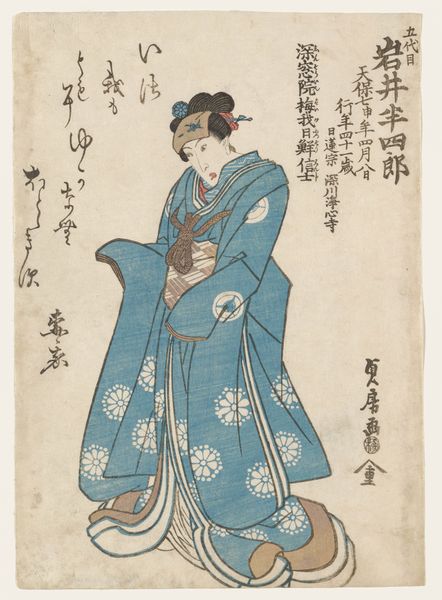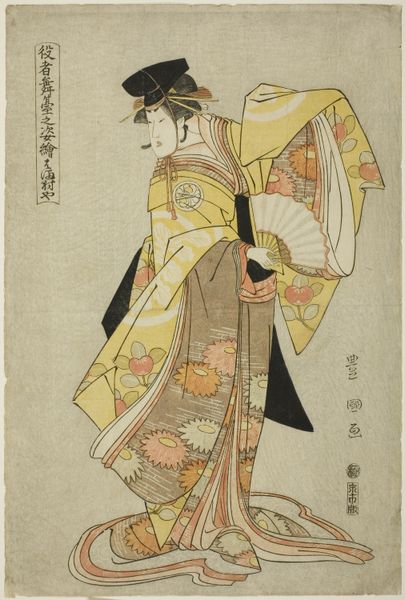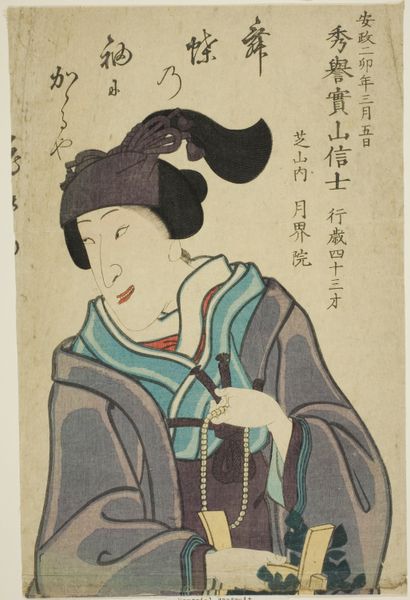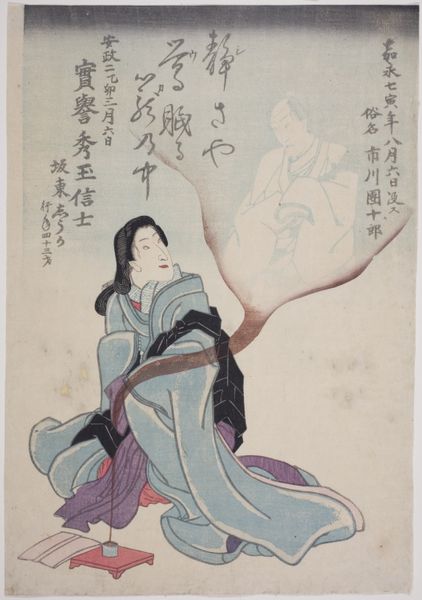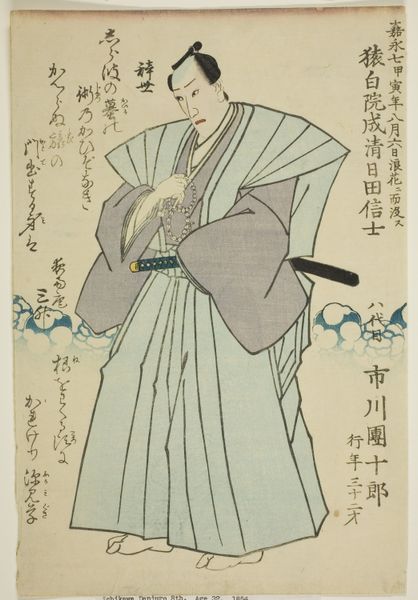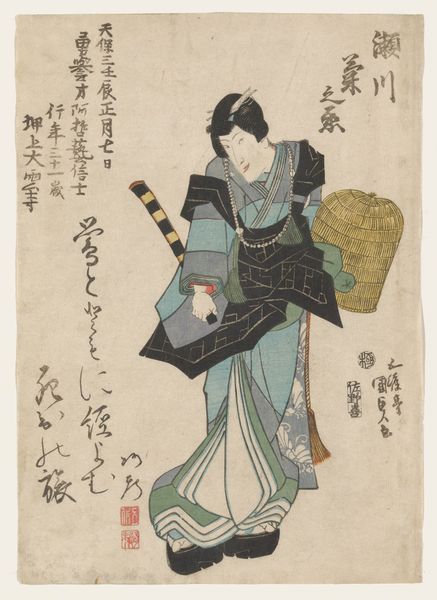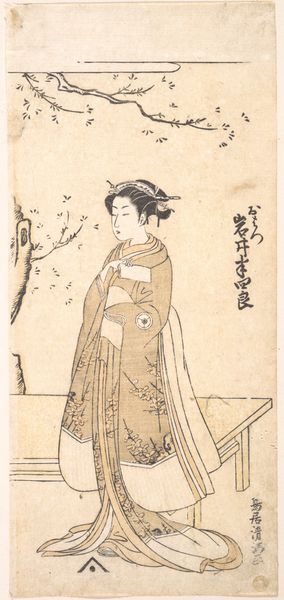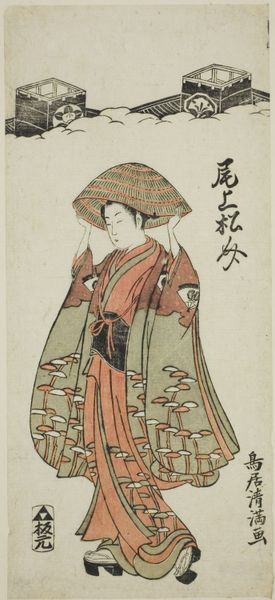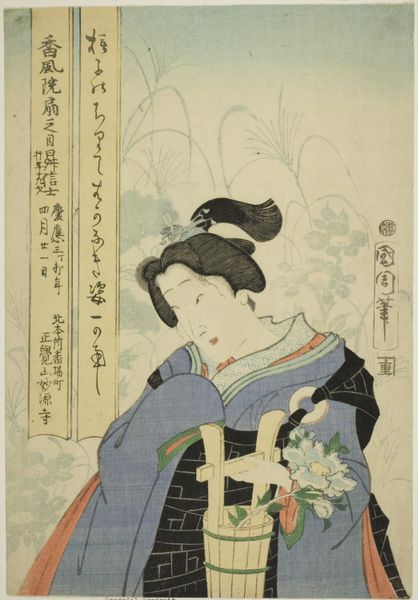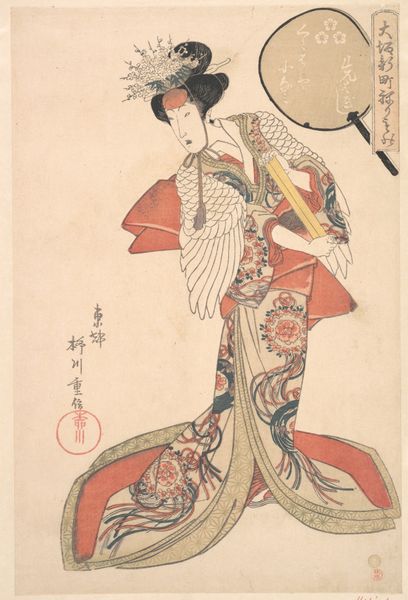
print, woodblock-print
#
portrait
# print
#
asian-art
#
ukiyo-e
#
figuration
#
woodblock-print
Copyright: Public Domain
Curator: Let’s talk about this memorial portrait from 1855 of the actor Bando Shuka I, now at The Art Institute of Chicago. It's a woodblock print, a style known as ukiyo-e. Editor: My first impression? Melancholy. The colors are muted, and the actor's bowed head gives it such a feeling of…quiet sorrow, perhaps? Curator: I think you’re right. Ukiyo-e, or “pictures of the floating world,” often depicted actors, but this one hits differently. He’s almost enveloped by his large, loosely draped robe, it feels so private and introspective. Editor: Robes can signify so much—status, of course, but also concealment, protection. The actor is turning inward, almost shielding himself from the world. Curator: He might also be warding something off or saying goodbye. Given that this is a memorial portrait, the bowed head, combined with the formal composition, could signal grief and respect. Editor: There's a powerful visual language being used, the cascade of layers echoing the weight of history and lineage, a family's legacy in theatre... but also the ephemeral nature of performance. Curator: Absolutely. And note how the delicate floral pattern at the top contrasts with the larger, less adorned lower portion. It could hint at his spirit ascending or perhaps signifies life's transient beauty against the backdrop of earthly sorrows. Editor: So many layers to peel back! It makes me ponder the cultural memory embedded in these images, not just a face, but an entire theatre tradition distilled into lines and color. What was it about Shuka that audiences connected with? Curator: Perhaps it’s in this quietness, this subdued performance immortalized on paper. It isn't merely a celebration but a poignant farewell. The symbols almost dare us to wonder more about the actor himself. Editor: Indeed. The power of an image, even a memorial one, to transcend time, allowing us glimpses into forgotten emotions and the symbolic threads of cultural identity, I will think on this image and his play.
Comments
No comments
Be the first to comment and join the conversation on the ultimate creative platform.
